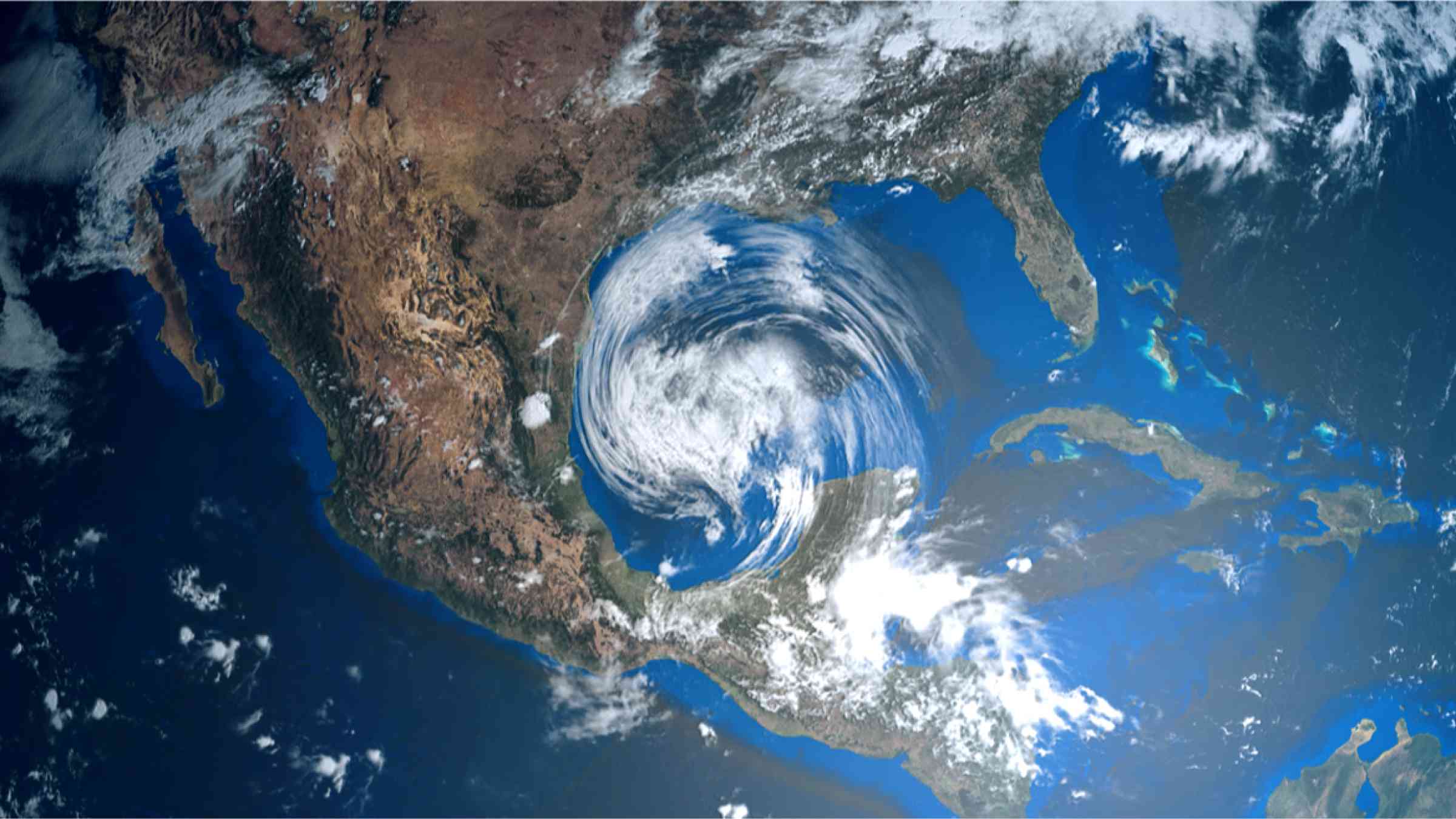Microwave data assimilation improves forecasts of hurricane intensity, rainfall

In 2017, Hurricane Harvey stalled after making landfall over coastal Texas, pouring down record rainfall, flooding communities and becoming one of the wettest and most destructive storms in United States history. A new technique using readily available data reduces forecast errors and could improve track, intensity and rainfall forecasts for future storms like Hurricane Harvey, according to Penn State scientists.
“Our study indicates that avenues exist for producing more accurate forecasts for tropical cyclones using available yet underutilized data,” said Yunji Zhang, assistant research professor in the Department of Meteorology and Atmospheric Science at Penn State. “This could lead to better warnings and preparedness for tropical cyclone-associated hazards in the future.”
Adding microwave data collected by low-Earth-orbiting satellites to existing computer weather forecast models showed improvements in forecasting storm track, intensity and rainfall when using Hurricane Harvey as a case-study, the scientists said.
“Over the ocean, we don’t have other kinds of observations underneath the cloud tops to tell us where eyewalls are, where the strongest convections are, and how many rain or snow particles there are in those regions, except for occasional reconnaissance aircraft that fly into some of hurricanes,” Zhang said. “This is very important for later predictions of how intense storms will be or how much rainfall hurricanes will bring.”
The research builds on the team’s prior work that improved hurricane forecasts using data assimilation, a statistical method that aims to paint the most accurate picture of current weather conditions, important because even small changes in the atmosphere can lead to large discrepancies in forecasts over time.
In the prior work, scientists with Penn State’s Center for Advanced Data Assimilation and Predictability Techniques assimilated infrared brightness temperature data from the U.S. Geostationary Operational Environmental Satellite, GOES-16. Brightness temperatures show how much radiation is emitted by objects on Earth and in the atmosphere, and the scientists used infrared brightness temperatures at different frequencies to paint a better picture of atmospheric water vapor and cloud formation.
But infrared sensors only capture what is happening at the cloud tops. Microwave sensors view an entire vertical column, offering new insight into what is happening underneath clouds after storms have formed, the scientists said.
“This is especially important when a hurricane matures in later stages of development, when pronounced and coherent cloud structures exist and you can’t see what’s going on underneath them,” Zhang said. “That’s the time when hurricanes are most dangerous because they’re very strong and sometimes already approaching landfall and threatening people. That’s when the microwave data are going to provide the most valuable information.”
Combining assimilated infrared and microwave data reduced forecast errors in track, rapid intensification and peak intensity compared to infrared radiation alone for Hurricane Harvey, the researchers reported in the journal Geophysical Research Letters. They said assimilating both sets of data resulted in a 24-hour increase in forecast lead-time for the rapid intensification of the storm, a critical time when some storms quickly gain strength.
Assimilating the microwave data also led to a better understanding of the amount of water particles in the storm and more accurate rainfall totals for Harvey, the scientists said.
“Rainfall predictions are extremely critical for preparing the public for hazards and evacuations,” Zhang said. “If we have a better understanding of how many rainfall particles there are in the storm, we have a higher likelihood of more accurate forecasts of how much rainfall there will be. Based on that, we will have more advanced guidance on how people should react.”
The scientists said additional work is needed to improve the model’s microphysics to simulate water and ice particles more realistically.
This study is based on work by former Penn State Distinguished Professor Fuqing Zhang, who led the project at the time of his unexpected death in July 2019.
“When our dear friend and colleague Fuqing Zhang died, the thread of ideas that wove together our ongoing combined infrared and microwave radiance data assimilation experiments unraveled,” said Eugene Clothiaux, professor of meteorology and atmospheric science and a co-author of the paper. “We came together over an extended period of time to reassemble the thread as best as possible.”
Also contributing from Penn State were Steven Greybush, associate professor; Xingchao Chen, assistant professor; and Man-Yau Chan, Christopher Hartman and Zhu Yao, graduate students.
Several former Penn State doctoral students, postdocs and faculty also contributed: Scott Sieron, support scientist at I.M. Systems Group; Yinghui Lu, associate professor at Nanjing University in China; Robert Nystrom, postdoc at the National Center for Atmospheric Research; Masashi Minamide, assistant professor at the University of Tokyo; James Ruppert, assistant professor at the University of Oklahoma; and Atsushi Okazaki, assistant professor at Hirosaki University in Japan.
The National Science Foundation, NASA, the National Oceanic and Atmospheric Administration and the Department of Energy Biological and Environmental Research program supported this work.